Toowoomba Chamber reveals 2023 Business Sentiment Index report by McCrindle
City small business owners can see the light at the end of the tunnel, despite a horror 12 months that has crushed sentiment across the region.
Business
Don't miss out on the headlines from Business. Followed categories will be added to My News.
Toowoomba businesses have a poorer outlook, are more cash-strapped and even more concerned about red tape – but it’s not all bad news.
That was the consensus from the latest Toowoomba Business Performance Sentiment Index report, which its author said showed local employers were more optimistic than in many other parts of Queensland.
The data from more than 150 business owners and managers, compiled by demographers McCrindle for the Toowoomba Chamber and unveiled at a breakfast on Thursday, showed commercial sentiment was “falling” from a neutral outlook in 2022.
While most firms reported a modest growth forecast, businesses surveyed held serious concerns for the current economic conditions of Toowoomba and Australia, the current regulatory framework and the reduced support from governments since the end of the Covid-19 pandemic.
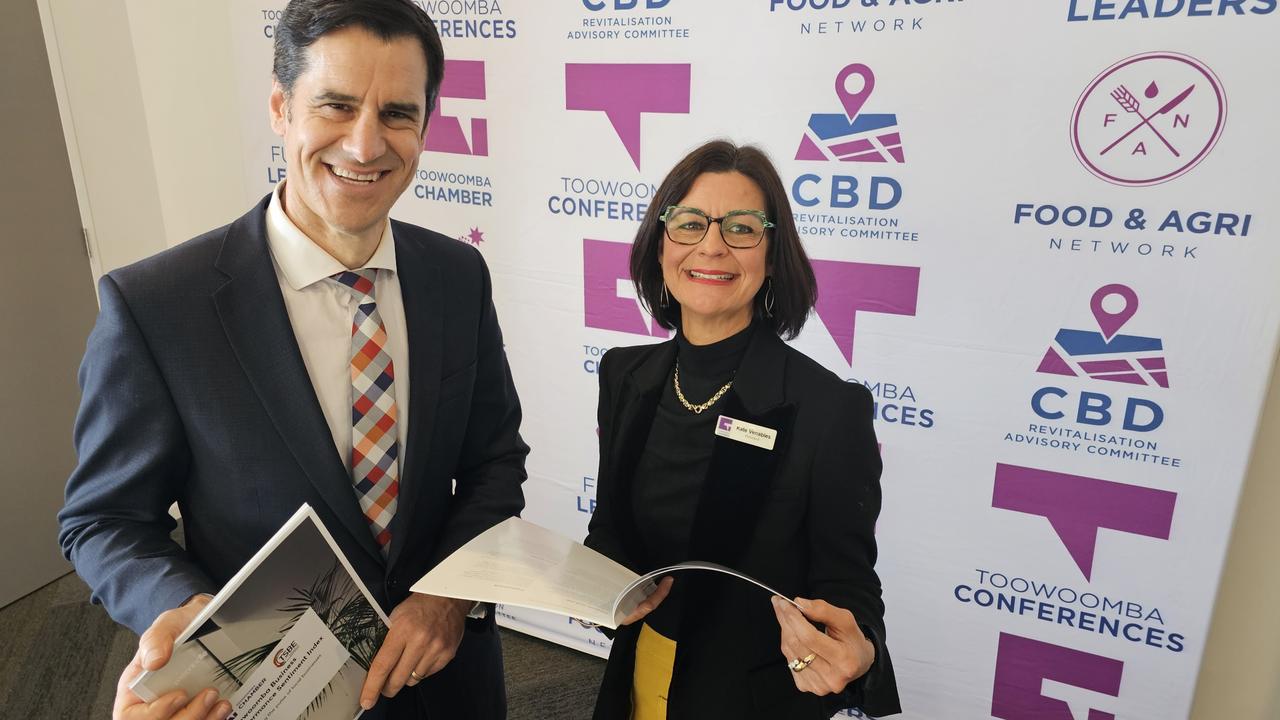
Employers also reported reduced cashflow, lower sales (particular among consumer-centre businesses) and increased issues with staffing levels.
The report found micro and small businesses were the most negative, with author and expert demographer Mark McCrindle saying the responses showcased both “frustration and angst”.
“We did have open-ended questions in this survey and it showed a real sense of frustration or angst,” he said.
“The responses we got around red tape and in general were just visceral.
“It told a story of frustration — they feel frustrated by red tape and they say they’re spending increasing amounts of time on paperwork and compliance.”
Despite these challenges, Mr McCrindle was highly optimistic about Toowoomba’s business future — and the survey results reflected that.
Businesses surveyed still had a positive outlook for expansion, internal revenue and staffing forecasts, with sole traders particularly rosy in their sentiments.
Mr McCrindle said the report was far more positive than other regional centres and that Toowoomba’s incredibly strong population growth and increasing number of businesses (up five per cent to nearly 17,000) were long-term tailwinds.
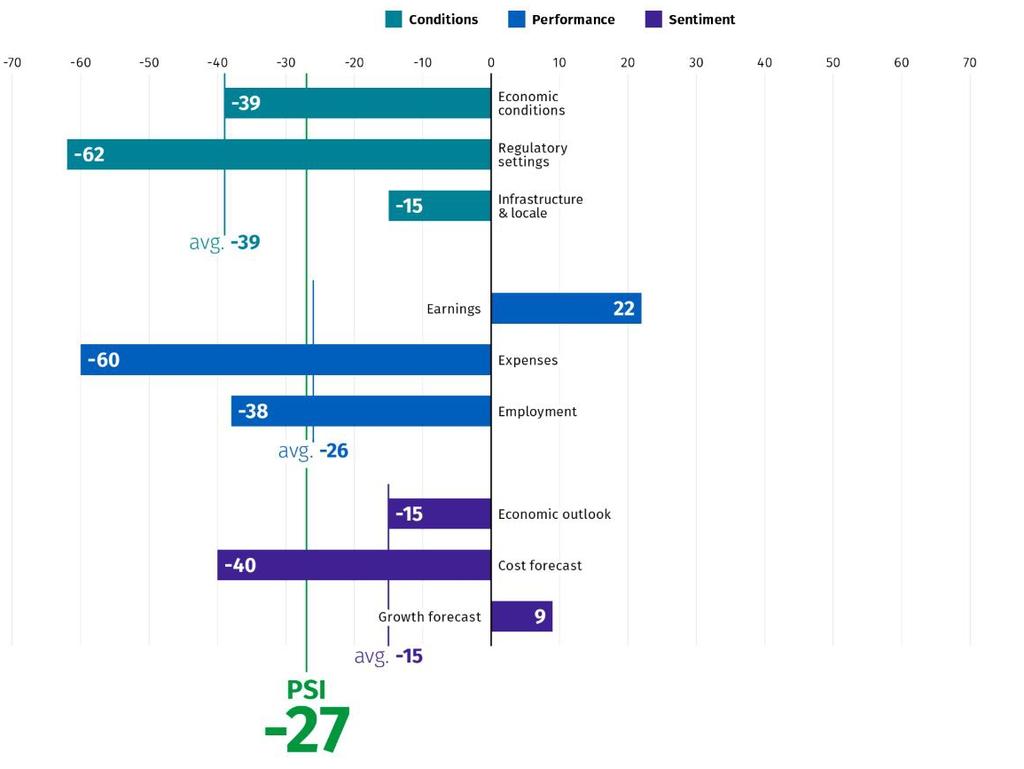
“The results for this year were more negative than last year, but the areas they’re in are issues of the national or local economy,” he said.
“They are external factors — yes we’ve got high interest rates and inflation as well as a skills shortage as migration plays a bit of catch-up, but businesses are planning for that.
“The long-term tailwinds giving a boost to businesses are set for the long term, like population growth, the growth of businesses and a sentiment where people feel with growth there are more opportunities in terms of sales.
“The long-term benefits are the case and the challenges are more short-term.”
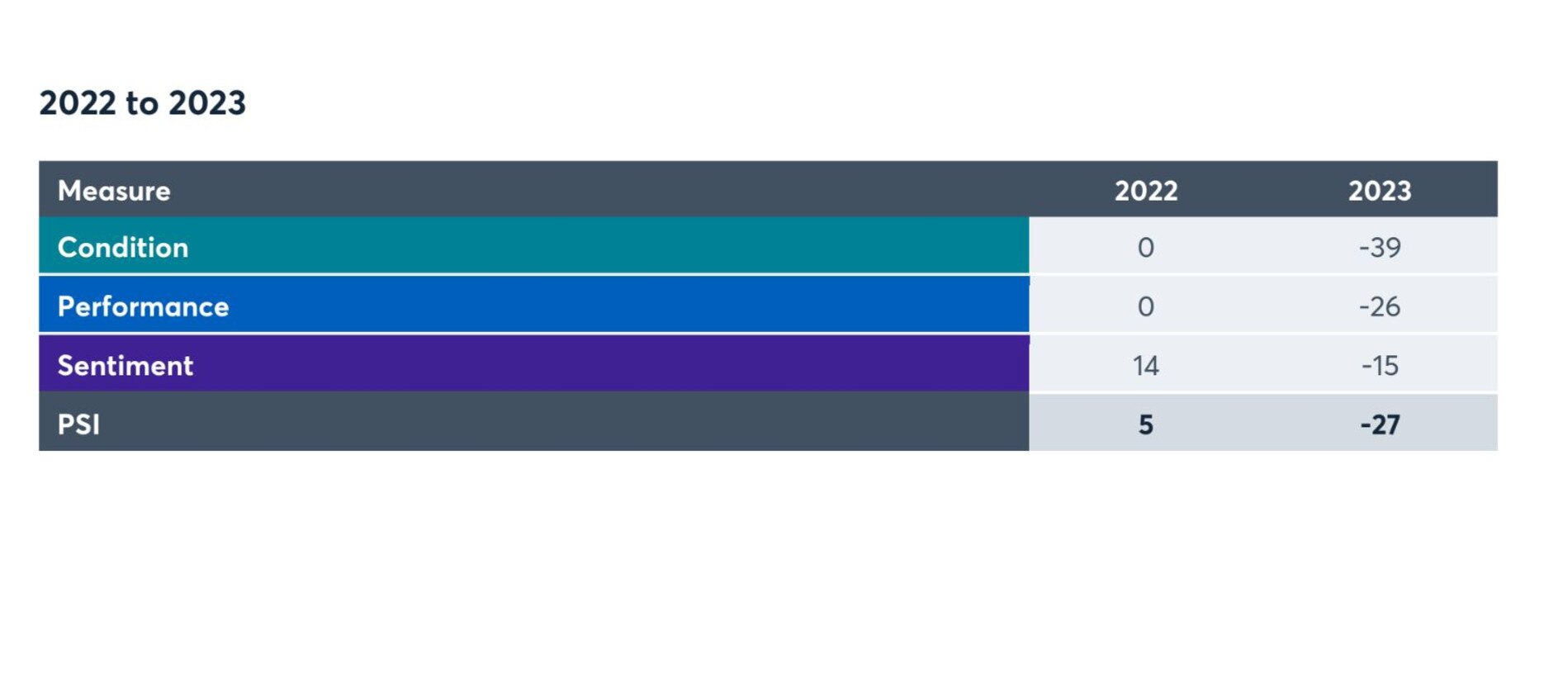
Toowoomba and Surat Basin Enterprise CEO Greg Bowden said the survey was a great insight into how businesses felt about current regulation standards, pledging to take those concerns to politicians.
“It’s a constant conversation with governments to talk about red tape,” he said.
“Over-regulation of businesses will cause downturns in an economy and that shouldn’t be the reason for a downturn.
“Now I have the report, I’m now able to talk about to different levels of government about the effect red tape is having on the local community.”

Toowoomba Chamber president Kate Venables said she was delighted to see the enthusiasm from businesses to get involved with survey, as well as the support for the organisation itself.
“It was really exciting to see that, and it’s a fabulous thing to take away, particularly when all the conditions that Mark spoke about mean people might decide to step away,” she said.
“We made a decision not to raise business fees and so people are committed because we are showing we’re entirely committed.”
Toowoomba housing stocks again questioned amid population data
Business leaders have called on the local and state governments to ramp up housing development following revelations the region’s population growth could be double what was initially forecasted.
Greater Toowoomba welcomed more than 3200 extra residents over the past 12 months — the best single-year results in the city’s history and much higher than the five-year annual average of 2000 people.
The data was revealed in expert demographer Mark McCrindle’s new Toowoomba business sentiment index, with much of the influx driven by interstate and intrastate migration (1926 people).
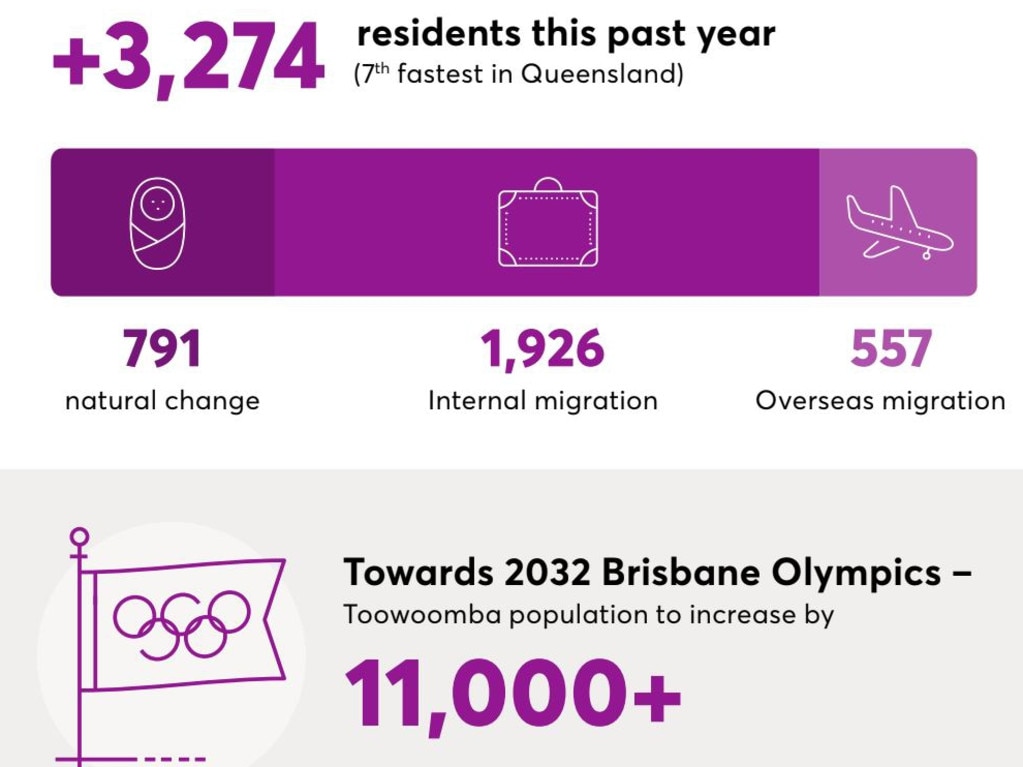
Mr McCrindle said the Queensland government was forecasting the region to welcome 11,000 extra people by 2031, but he said last year’s growth rate would translate to an extra 29,000 people.
He said an influx of new residents would put further pressure on future land supply.
“There are amazing opportunities with population growth - unprecedented growth over the past 12 months, it’s 50 per cent higher than the five-year average, so phenomenal growth and with that comes investment, infrastructure and housing,” Mr McCrindle said.
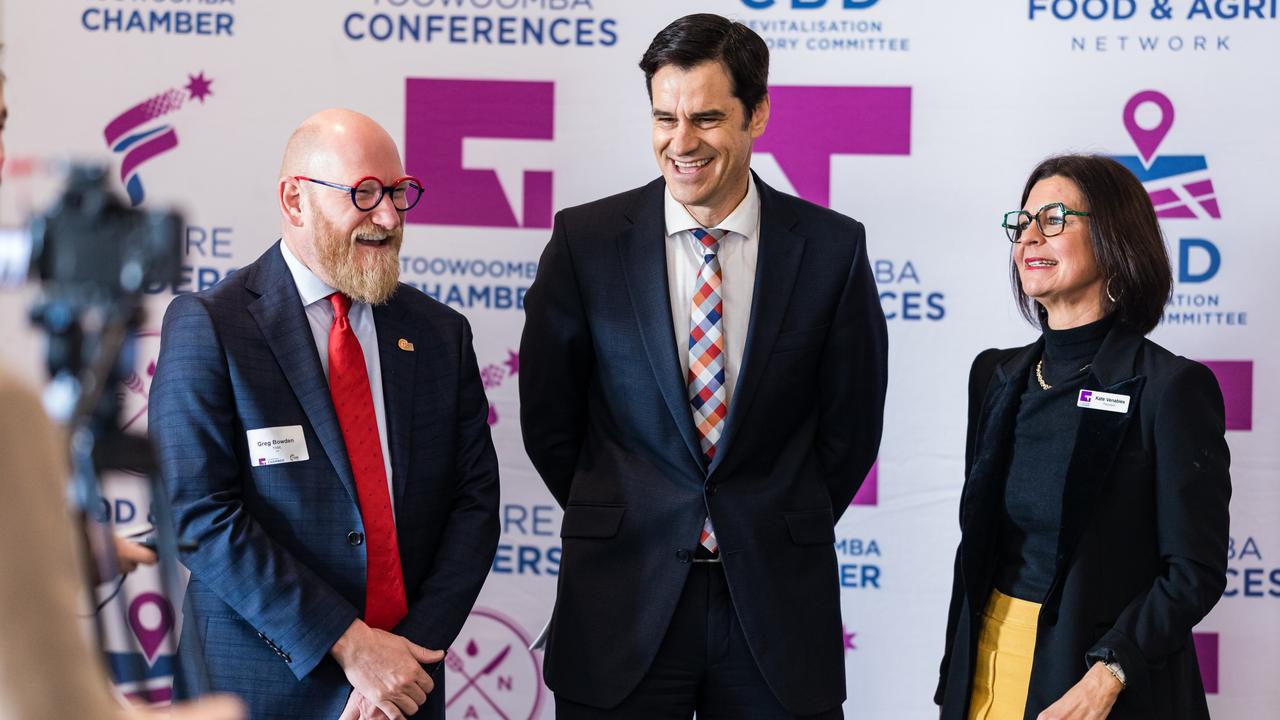
“It’s great to have the population growth but you’ve got to plan for it, so that means you’ve got to have the land releases, that there can be land and house packages, particularly for young families, so the skills retention can be here.”
Toowoomba Chamber president Kate Venables said housing would remain a priority for the organisation as it continued to lobby the council in the coming months and years.
“There’s no question that housing is our number one concern,” she said.







